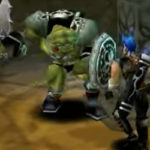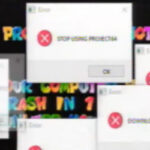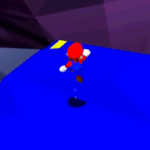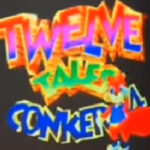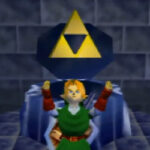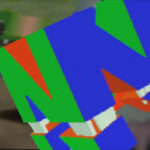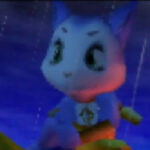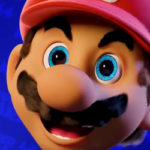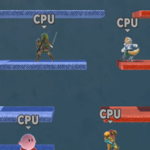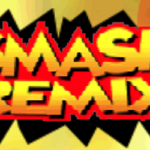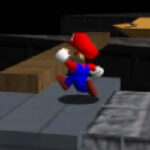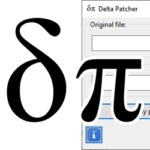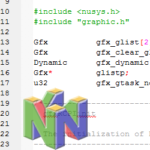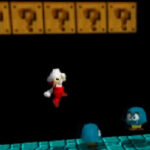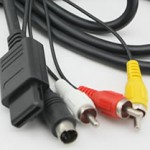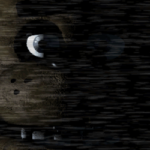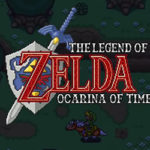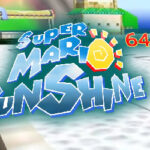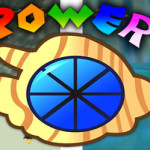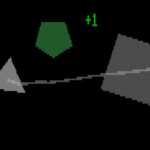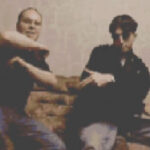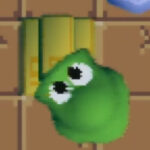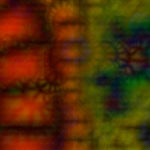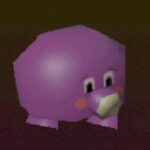The story of Harry Potter on the N64

If there’s something that defined the late 90’s (besides Pokémon, Y2K panic and Monica Lewinsky), it was Harry Potter. Back in the day, I never really got into the Books or movies. The book was kinda boring about a kid that goes to school (had enough of that growing up) and I had to watch the first movie on a road trip but it wasn’t anything to write home about.
The stranges thing though was that there was never a Nintendo 64 Harry potter game made. You’d think that it being the ‘family friendly’ console to have, they’d go hand in hand. This video by DidYouKnowGaming hows us the details of what went wrong with the rights over the Harry Potter game.
There was a time however that another very different vision for the Potter media Empire was on the table. In the late 90s it was none other than Japanese video game giant Nintendo that had the rise on the harry potter rights of aspirations of transforming it into a video game series. I spoke to former Nintendo employees to discover how the company once tried to buy their way into the world of Harry Potter.
Nintendo’s fascination with the Harry Potter series began in around 1999. At this point in their history the company had not long since dabbled in developing an exclusive game for their system using a licensed acquired from an external source. This arrangement was the foundation for 1997’s Goldeneye 007 on Nintendo 64, Rare’s acclaimed first-person shooter using the James Bond license. It was a break from tradition for Nintendo who had previously made a point to cultivate their own intellectual property.
The success of Goldeneye’s former developers say open Nintendo’s eyes to the potential of such collaborations and paved the way to them taking an interest in Harry Potter. The push within the wider company to look into buying the Harry Potter license is said to have originated from Nintendo of America. The idea was first being floated by a Nintendo of America’s management which other time was being run by Minoru Arakawa. Despite their Japanese headquarters ultimately having the final say on any major business decisions, Nintendo afforded some autonomy to their American branch and this allowed them to pursue the Harry Potter IP when the opportunity presented itself.
By 1999 JK Rowling series had reached its third installment and its popularity was starting to erupt. Harry Potter and the Prisoner of Azkaban became one of the fastest selling books of its time after its UK debut in July of that year and the business world was starting to take notice. With the property’s immediate potential for merchandising and adaptations becoming increasingly evident, JK Rowling opened a dialogue to auction off the rights to use Harry Potter in other mediums. The author is said to have been interested mostly in having movie adaptations of her series made, but that didn’t stop Nintendo from making an offer of their own. They too had identified the burgeoning franchise as a potential moneymaker and wanted in.
The group charged with the task of coming up with ideas for Nintendo-made Harry Potter games was Nintendo software technology. This studio located just down the street from Nintendo of America’s HQ in Redmond Washington had been founded only one year prior with the objective of developing titles specifically for the Western market. A former Nintendo producer shared that they received strict instructions to read every Harry Potter book on the market from cover to cover in preparation. This totalled over 700 pages worth of reading material to catch up on within a few days.
Nintendo software technology at the time was already midway into development on three other games: Ridge Racer 64 Bionic Commando and a gameboy color version of crystallis. A portion of developers from these projects were split into two groups to work on the big Harry Potter pitch. One of these would formulate ideas for a third-person adventure game that would adopt the main story of the books. The other had to create a concept for a spin-off videogame based around Harry Potter’s fictional sport, Quidditch. Both of these would have been developed for the Nintendo 64, with the possibility for Alisa’s on other Nintendo platforms in the future.
Nintendo wanted exclusive access to the video game rights meaning that their platforms would be the only places to find Harry Potter games. As the book series will continue, each future Nintendo system going forward with a theoretically had its own Harry Potter games based around each book developed by Nintendo’s own teams, or so was the plan. Developers described the process of mapping out the pitches as what was a hectic week of experimentation and occasional disagreements about their direction.
Initially some of the artists visualizing the world and characters of Harry Potter had planned to pursue an art direction similar to the cover art of the books. This was in response to comments JK Rowling had made in the press about wanting to preserve the Britishness of the books in any adaptations of the source material going forward. There was therefore an effort among artists on the project not to stray too far from the first books art design as envisioned by British illustrator Thomas Taylor. However this soon received some pushback from the management of NST who wanted the characters to be drawn in more of a manga inspired style after some heated debate over this the honest Civ entra Lee agreed to redraw the characters as instructed with a decidedly more Japanese look.
Nintendo software technology didn’t produce a full prototype for the Harry Potter concepts, instead alt animations and mock 3d demos were created to show what the games might one day look like. Very few of the pitch documents have since been preserved; among the few that have survived are some concept art pieces shown Nintendo’s vision for the Harry Potter world. One locale paid particular attention to was Hogwarts itself in one Nintendo artist’s interpretation of the iconic setting, the castle was imagined as sitting on a mountaintop above a long and winding road, surrounded by forests.
Despite Nintendo’s lofty ambitions of a long lasting partnership of the rights holders and their line of exclusive games their attempt to gain access to Harry Potter was ultimately unsuccessful. According to former members of the team, representatives of JK Rowling weren’t interested in that proposal. One ex-producer recalls that Nintendo found their asking price for the license to be simply too expensive, although some sources from the company suggest that Nintendo made further moves to pursue Harry Potter only a year later.
Following the rejection of Nintendo’s first pitch, JK Rowling sold the Harry Potter movie rights in 1999. Various media companies had approached her with offers including Universal and 20th Century Fox, but it was Warner Brothers with whom she was able to reach an agreement. A film adaptation of the first book was soon put into pre-production, scheduled for a 2001 release. In 2000 the rights to do a video game to tie into the movie were put up for sale. A number big game industry names again came forward such as Microsoft and Nintendo.
The Big N entered discussions to develop the adaptations for their systems and again was outdone this time by Electronic Arts. With both Microsoft and Nintendo wanting to develop the Harry Potter games exclusively for their respective machines, the rights holders went with Electronic Arts in order to reach the widest audience possible. EA was able to develop their adaptations of the Philosopher’s Stone movie for as many platforms as they desired in its initial 2001 release it came to Microsoft Windows, Game Boy Advance, Game Boy color and PlayStation.
Notably the platform that Nintendo had most wanted a Harry Potter game on, the Nintendo 64, was excluded. Following the success of the first game, EA continued to partner with Warner for the remainder of the movie series, producing adaptations of each film up until Harry Potter and the Deathly Hallows part 2 in 2011.
If you’ve enjoyed this video please don’t forget to subscribe for more. Special thanks to my patrons for making these videos possible and I hope you’ll join me for another Game History Secrets.
The video does have a lot of background for what could be summarised that Nintendo had a few games planned based on The Philospher’s Stone and Quidditch, but it never went through because rumors say that the Harry Potter license was too expensive. The rights holders instead went with Electronic Arts, who had the ability to make multi-platform games (unlike Sony or Nintendo) and therefore reach a wider audience. The game’s eventual release was in November 2001, which would have made it one of the last games to be released on the system, which just didn’t make business sense for a game that was meant to be a blockbuster.
